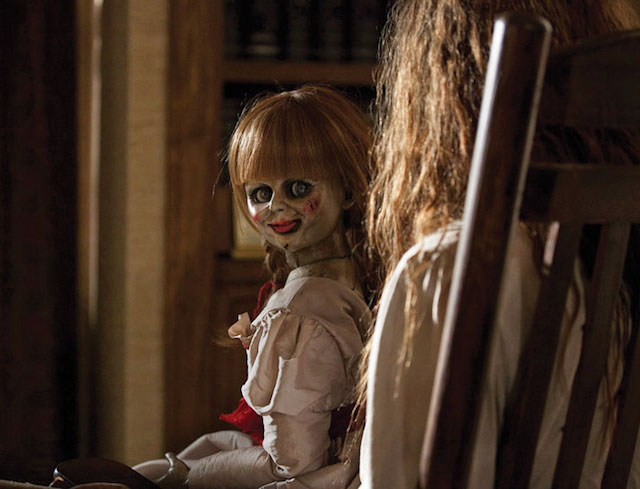I love storytelling because it’s how cultural messages are spread.
Our stories can tell us what qualities to develop, what kind of friends to be…and what enemies to fear.
Fear is a powerful emotion—one that moves people to act more quickly than any other. Recently, I’ve turned to horror movies and their villains to understand what cultural messages lie behind them.
The scariest villains to me are the supernatural ones; they are the ones who might follow me home and linger in the shadows unless I keep the light on.
One of the most popular supernatural villains of the 21st century has been in New Line Cinema’s, “The Conjuring” franchise. So, who is the movie’s villain and what are the messages? In “The Conjuring,” the ghost of a witch named Bathsheba haunts the Perron family home. She possesses mothers and makes them kill their own children—a reenactment of the crime she committed while she was alive. She had sacrificed her baby to Satan to keep her land. Bathsheba showed me that America still fears the idea of a demonic evil—in this case, an infanticidal witch who worships Satan.
To be clear, I’m not arguing about the reality of demons or a particular religion’s ideas about evil. I wanted to watch these movies to see who or what the mainstream culture sees as the evil that should be feared. The film made it loud and clear for audiences; the final scene includes a memorable line from the other protagonist, Ed Warren, a real-life demonologist:
“Diabolical forces are formidable. These forces are eternal, and they exist today. The fairy tale is true. The devil exists. God exists. And for us, a people, our very destiny hinges upon which one we elect to follow.”
New Line Cinema and “The Conjuring” team found the idea of a Satanic witch highly marketable and focused on the film’s religious angle to promote it. One of their “stunts” was inviting a priest to bless audiences so they would be less susceptible to demonic forces they may encounter through watching the movie. I chalked this up to clever marketing strategies, like the “Based on a True Story” tagline on the movie poster.
However, after reading discussions about the film online, I was surprised by how many people were serious about coming across real, satanic evil through this kind of movie. Entertainment Weekly’s Owen Gleiberman even wrote an article about the impressive amount of evangelicals who turned out for “The Conjuring 2” release, and Christianity Today praised the screenwriters, Chad and Carey Hayes, for emphasizing the Christian idea of good and evil. Many viewers and critics resonated with these themes.
From the movie, we learn a lot about the culture based on how the villains are defeated. To put it in medical terms, once I have a diagnosis, I should take certain steps to get healthy. In “The Conjuring,” the cure for Bathsheba and satanic forces like her is an exorcism. The screenwriters told Christianity Today, “We’re never going to glorify evil. We want people to feel great after seeing it. To be scared and entertained, of course, but to walk out of the theater with a good feeling because good, God, is victorious.” In “The Conjuring’s” case, the writers sought to remind audiences about the power of a Christian God.
I get a lot of flack from family members for seeing more in a movie than just its entertainment value. And it’s true that horror movies aren’t known for their artistry or winning a lot of Academy Awards. But I believe there’s always something we take from these films into our personal lives. Edgar Degas said, “Art is not what you see, but what you make others see.”
“The Conjuring” makes me see a culture that fears what would happen if families had no protection against evil beings like Bathsheba, what evil may come if a woman doesn’t embrace being a mother, and what salvation lies for people who don’t believe in a Christian God.
If any part of my thought experiment intrigued you, I invite you to do the same exercise. The next time you watch a movie or TV show, read a book, or even check out the news, consider the cultural biases that could be behind it. What message are they sharing? And, more specifically, who are the villains?
I would love to hear what you find.
~
~
~
Author: Lindsey Slanker
Image: “The Conjuring”
Apprentice Editor: Jay Su; Editor: Travis May






Read 0 comments and reply